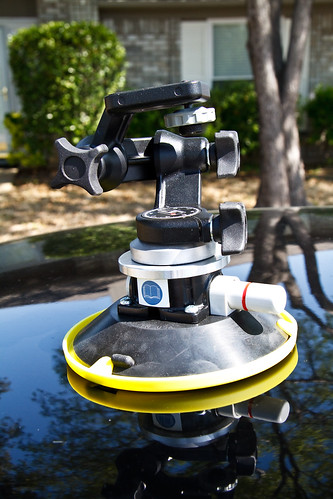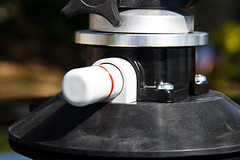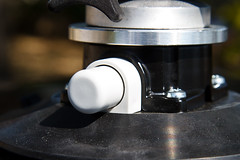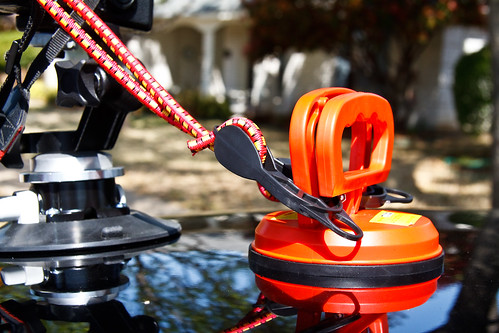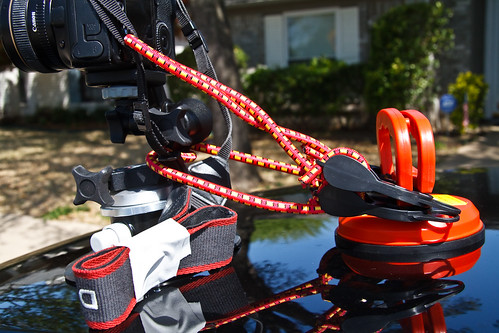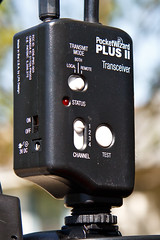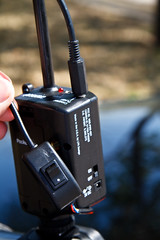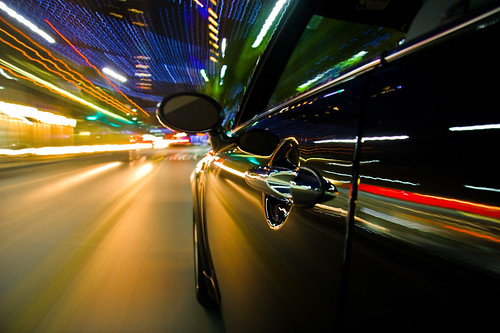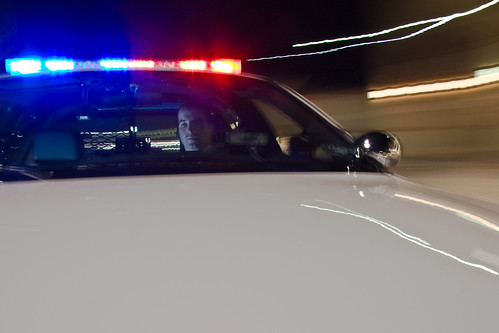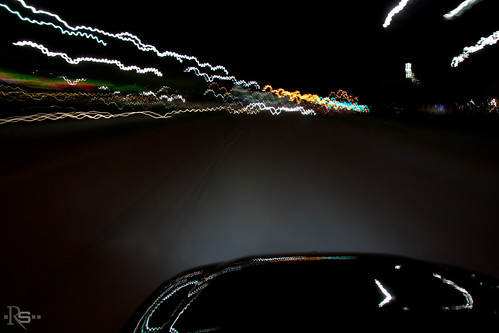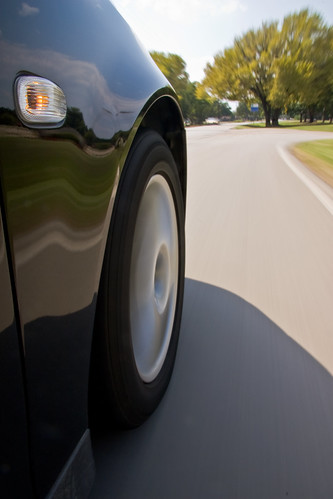Family Portrait Tips!
There are a few easy rules to keep in the back of your mind the next time your family gets together for a photo and hands you the camera. Remember these and your photos should look better than ever!
1) Time of day is key for outdoor portraits. No photographer worth his salt will set up an outdoor portrait session for 12pm or 1pm unless he really has no other alternative. The main reason being that the light is just so harsh.
Hard light has multiple negative effects. For one, it creates hard shadows. Since the sun is directly overhead you will typically get a nice long nose shadow, as well as a large portion of the neck being shaded by the chin. These are things we could live with as photographers. But the harsh sun also accentuates wrinkles (which no one likes) and the angle of the mid-day sun keeps light out of the eye sockets. This leaves your eyes much darker than the rest of your face. If your skin is light there is even a chance you will just see dark holes where the eyes were.
By shooting later in the day, such as right before the sun goes completely down, we get much softer light, directional light (which you can use to front-light or back-light), as well as a nice warm orange light which is very complimentary to most skin tones. An added bonus is that the sky typically is very pretty during this time of day and could easily be used as your background.
Sometimes, however, you just don't have a choice as to when you shoot your pictures. If you absolutely have to get a good photo while the sun is high in the sky, try to find somewhere that is shaded. Sometimes the sides of buildings will be in shade, or if you are lucky there might be some nice trees nearby. Just make sure everyone is completely shaded and that there aren't pieces of light hitting parts of the faces. Also make sure everyone is in the shade. If 3 people are shaded and 3 are not, the picture will not turn out very well.
2) Shoot from a higher angle if one is available. If you are just outside in the back yard for a photo, try and set the camera on something that is elevated. Or stand on a chair if you are not going to be in the photo. This makes everyone's chin pull up just a little bit, stretching out the skin under the chin and avoiding the dreaded "double chin". I'd say as a general rule, never shoot a family (or group) photo from a low angle. From this angle everyone has to look down at the camera, accentuating double chins, and your angle provides an excellent view of what is in everyone's nostrils!
3) Avoid cluttered areas. If you look online at a few portrait photographer's websites, you will almost never see a photo that has a cluttered background. When positioning the family for your photos, keep an eye on what is in the background. make sure there aren't a bunch of signs, people, fence posts, etc in the background. A busy background is very distracting and takes away from the quality of your image. Especially make sure no one has any signs, posts, lights, etc sticking out of the top of their heads. These "funny hats", as we call them, are so easily overlooked, yet have such a terrible effect on an image. Just remember, no one wants a stop sign sticking out of their head!
Great examples of backgrounds are fields, walls, trees, water, or anywhere that subtle but has some sort of consistency. The background should be there, but go unnoticed.
4) Avoid dark clothing and dark backgrounds. A black shirt on a person standing in front of a dark background can often lead to what we call the "floating head". The dark shirt will blend into the dark background, leaving only the neck and head to stand out. It isn't very flattering.
5) Finally, leave the pets indoors. A lot of people love having photos done with their pets, especially dogs. However, more often than not, our canine friends don't cooperate. The natural tendency of the owners is to look at the dog until it is looking at the camera, and then real quick try to look up at the camera before the dog is distracted. This usually results in 90% of the photos being of the dog looking away and the people looking at the dog, or the dog looking at the camera and the people still looking at the dog. It is a lot to try to juggle, and pets don't have a very good attention span when it comes to taking photos outdoors.
Its best to just leave the pets inside and concentrate on the people.
I hope some of these tips are helpful!
1) Time of day is key for outdoor portraits. No photographer worth his salt will set up an outdoor portrait session for 12pm or 1pm unless he really has no other alternative. The main reason being that the light is just so harsh.
Hard light has multiple negative effects. For one, it creates hard shadows. Since the sun is directly overhead you will typically get a nice long nose shadow, as well as a large portion of the neck being shaded by the chin. These are things we could live with as photographers. But the harsh sun also accentuates wrinkles (which no one likes) and the angle of the mid-day sun keeps light out of the eye sockets. This leaves your eyes much darker than the rest of your face. If your skin is light there is even a chance you will just see dark holes where the eyes were.
By shooting later in the day, such as right before the sun goes completely down, we get much softer light, directional light (which you can use to front-light or back-light), as well as a nice warm orange light which is very complimentary to most skin tones. An added bonus is that the sky typically is very pretty during this time of day and could easily be used as your background.
Sometimes, however, you just don't have a choice as to when you shoot your pictures. If you absolutely have to get a good photo while the sun is high in the sky, try to find somewhere that is shaded. Sometimes the sides of buildings will be in shade, or if you are lucky there might be some nice trees nearby. Just make sure everyone is completely shaded and that there aren't pieces of light hitting parts of the faces. Also make sure everyone is in the shade. If 3 people are shaded and 3 are not, the picture will not turn out very well.
2) Shoot from a higher angle if one is available. If you are just outside in the back yard for a photo, try and set the camera on something that is elevated. Or stand on a chair if you are not going to be in the photo. This makes everyone's chin pull up just a little bit, stretching out the skin under the chin and avoiding the dreaded "double chin". I'd say as a general rule, never shoot a family (or group) photo from a low angle. From this angle everyone has to look down at the camera, accentuating double chins, and your angle provides an excellent view of what is in everyone's nostrils!
3) Avoid cluttered areas. If you look online at a few portrait photographer's websites, you will almost never see a photo that has a cluttered background. When positioning the family for your photos, keep an eye on what is in the background. make sure there aren't a bunch of signs, people, fence posts, etc in the background. A busy background is very distracting and takes away from the quality of your image. Especially make sure no one has any signs, posts, lights, etc sticking out of the top of their heads. These "funny hats", as we call them, are so easily overlooked, yet have such a terrible effect on an image. Just remember, no one wants a stop sign sticking out of their head!
Great examples of backgrounds are fields, walls, trees, water, or anywhere that subtle but has some sort of consistency. The background should be there, but go unnoticed.
4) Avoid dark clothing and dark backgrounds. A black shirt on a person standing in front of a dark background can often lead to what we call the "floating head". The dark shirt will blend into the dark background, leaving only the neck and head to stand out. It isn't very flattering.
5) Finally, leave the pets indoors. A lot of people love having photos done with their pets, especially dogs. However, more often than not, our canine friends don't cooperate. The natural tendency of the owners is to look at the dog until it is looking at the camera, and then real quick try to look up at the camera before the dog is distracted. This usually results in 90% of the photos being of the dog looking away and the people looking at the dog, or the dog looking at the camera and the people still looking at the dog. It is a lot to try to juggle, and pets don't have a very good attention span when it comes to taking photos outdoors.
Its best to just leave the pets inside and concentrate on the people.
I hope some of these tips are helpful!
Labels: family photos, family portraits, how to, portraits, tips, tips and tricks
